|
Sigma AF 150mm f/2.8 EX DG HSM APO Macro OS (Canon EOS) - Review / Test Report - Tele Converter Analysis |
|
Lens Reviews -
Canon EOS (Full Format)
|
|
Page 3 of 4

Introduction - Tele Converters
Usually we don't test tele converter combinations due to time constraints but Alexandre included his EF 1.4x III and EF 2x III into the package so our resistance was futile. Anyway, the Sigma AF 150mm f/2.8 EX HSM DG APO macro OS accepts both the original Sigma as well as Canon converters resulting in a 210mm f/4 (EF 1.4x) and 300mm f/5.6 (EF 2x) combination respectively. You may notice in the product images below that the EF 2x converter is actually quite long compared to the base lens. As mentioned the OS remains functional with these converters whereas (a slightly slower) phase detection AF only works with the EF 1.4x III (on the EOS 5D II). It's a bit strange that contrast AF (LiveView) is available with the EF 2x III though - this is mentioned in the manual of the lens. The effective aperture is displayed - you will loose one f-stop with the EF 1.4x III and two f-stops with the EF 2x III.
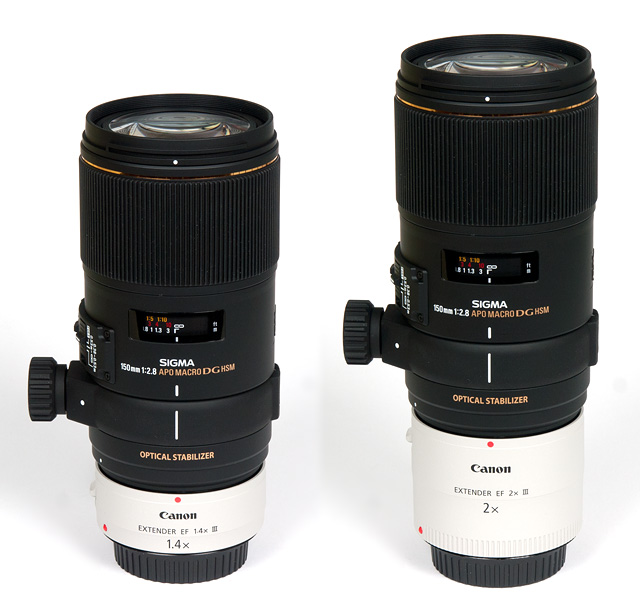
Sigma AF 150mm f/2.8 EX DG HSM APO macro OS with Canon EF 1.4x III converter
Distortions
The EF 1.4x III converter introduces a slight barrel distortion into the system. At ~0.65% this is not objectionable though.
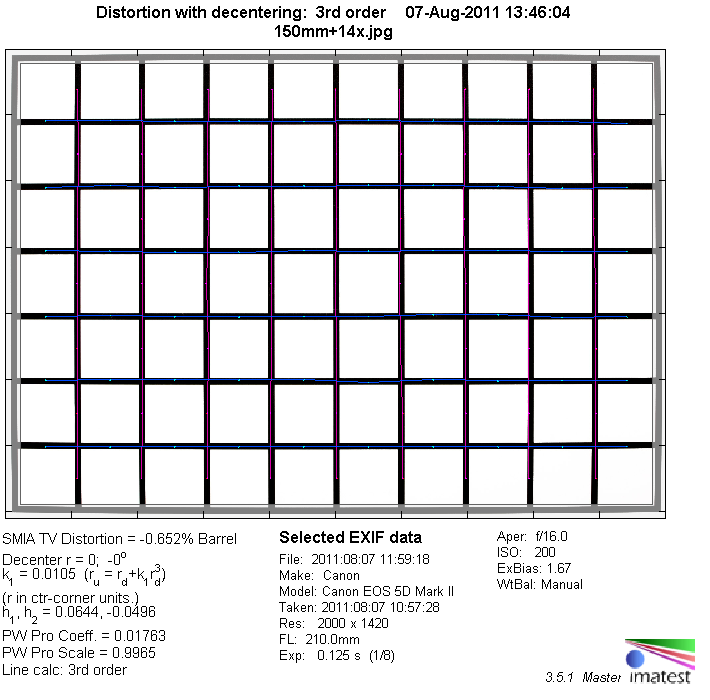
Vignetting
A converter magnifies the center image portion of the base lens so the vignetting is actually reduced due to the sweet spot effect. At max. aperture (f/4) the combination produces only a moderate degree of light falloff and it's basically gone by f/5.6.
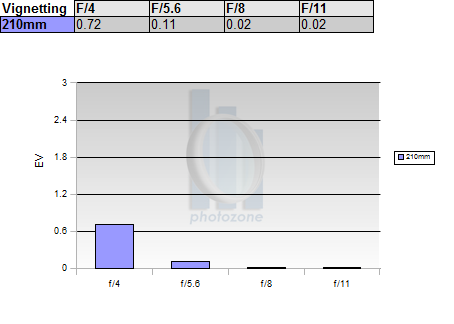
MTF (resolution)
Unsurprisingly a converter has a negative impact on the overall quality of the base lens - after all it magnifies all flaws. However, the Sigma AF 150mm f/2.8 EX HSM DG APO macro OS is a very good base lens so the reduction in resolution is not excessive. The impact is most obvious at max. aperture, of course, but the combo is still capable of delivering good to very good results here. Stopping down to f/5.6 produces a very sharp quality across the frame again. The peak performance is reached at f/8 where the center is even capable of delivering excellent results. Diffraction effects start from f/11 again.
Below is a simplified summary of the formal findings. The chart shows line widths per picture height (LW/PH)
which can be taken as a measure for sharpness. If you want to know more about it you may check out the corresponding
Imatest Explanations.
Chromatic Aberrations (CAs)
The Sigma lens shows virtually no CAs and so the magnification effect is minimal here.
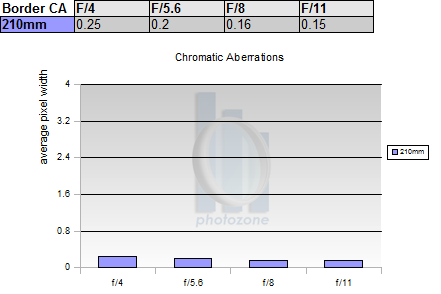
Sigma AF 150mm f/2.8 EX DG HSM APO macro OS with Canon EF 2x III converter
Distortions
The EF 2x III introduces a similar amount of barrel distortion (0.6%) which is not relevant from a real-world perspective.
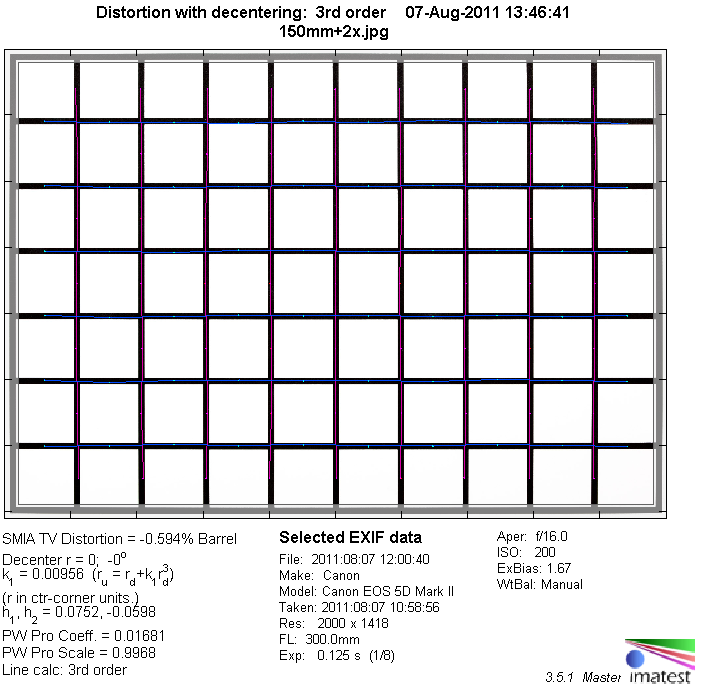
Vignetting
The light falloff is further reduced to a rather negligible amount of 0.5EV (f-stops) at max. aperture. This is rarely visible except in very critical scenes. The issue is gone from f/8 onwards.
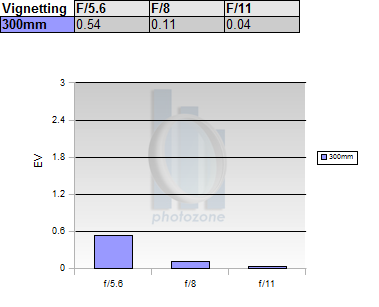
MTF (resolution)
The EF 2x III converter is stretching the optical limits already. The combination is still usable but not really better than a good quality 300mm zoom lens. At max. aperture the results are only good and you also notice a certain decrease in contrast here. Stopping down to f/8 lifts the center to very good levels but the peak performance is reached at f/11 with a sharp quality across the frame. A peak at f/11 is very "late" which shows that the correcting forces by stopping down still override the diffraction effects till this setting.
Below is a simplified summary of the formal findings. The chart shows line widths per picture height (LW/PH)
which can be taken as a measure for sharpness. If you want to know more about it you may check out the corresponding
Imatest Explanations.
Chromatic Aberrations (CAs)
The CAs (color shadows at harsh contrast transitions) remain irrelevant even with the 2x converter which just shows the excellent performance of the Sigma base lens.
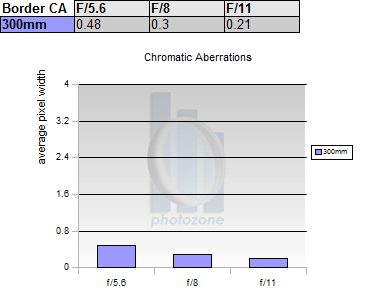
|